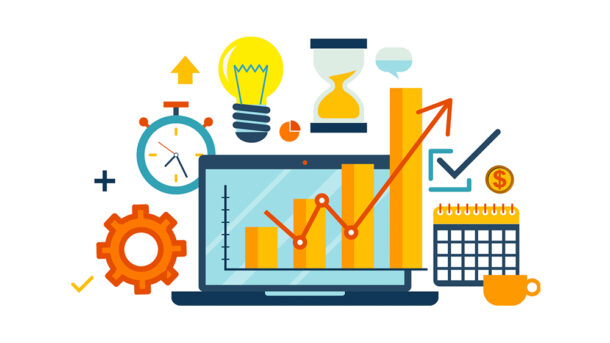Starting a business is a journey that embodies both excitement and ambition. Entrepreneurs set out on this path for a variety of reasons, driven by their passions, aspirations, and desire to change the world. In this comprehensive article, we delve into the depths of the entrepreneurial mindset, answering the intriguing question, “Why do you want to start a business?” We’ll explore the multifaceted aspects of this query while shedding light on the significance of business development solutions. Join us on this exploration as we navigate the world of website and graphic design, digital marketing, infrastructure building, and more, offered by the experts at TechArt Digital.
The Entrepreneurial Spirit: An Unquenchable Flame
Starting a business is akin to igniting a passionate flame within the heart of an entrepreneur. A strong desire to accomplish something more significant, leave a lasting impression, and realize one’s original ideas frequently drives this endeavor. The entrepreneurial spirit encapsulates a myriad of emotions, from the thrill of independence to the pursuit of financial freedom.
Embracing Creativity and Innovation
Fostering Innovation: The Heart of Entrepreneurship
Innovation lies at the core of entrepreneurship. The pursuit of novel and creative solutions to current problems is what motivates entrepreneurs. They envision uncharted territories and strive to create products or services that stand out from the crowd. This drive to innovate propels them to start businesses that can reshape industries.
Pursuit of Passion and Fulfillment
Passion Fuels Purpose: Turning Dreams into Reality
Passion is a driving force that propels individuals to turn their dreams into reality. Entrepreneurs often start businesses centered around their passions, leveraging their deep-seated interests to create something extraordinary. This alignment between passion and profession fuels a sense of fulfillment that transcends mere monetary gains.
Financial Independence: Beyond the 9-to-5 Grind
Shaping Financial Destiny: From Employment to Entrepreneurship
The allure of financial independence is a potent motivator for aspiring business owners. Breaking free from the confines of a traditional 9-to-5 job, entrepreneurs seek to chart their financial destinies and create opportunities for wealth generation. The potential for substantial earnings and the ability to control one’s income drive many to venture into the world of entrepreneurship.
Flexibility and Work-Life Balance
Balancing Act: Navigating Work and Life on Your Terms
Entrepreneurs often seek the flexibility to design their work-life balance according to their preferences. The autonomy to set schedules, prioritize tasks, and allocate time for personal endeavors is a significant driving force behind starting a business. This pursuit of equilibrium allows entrepreneurs to weave their professional and personal lives seamlessly.

Leaving a Lasting Legacy
Crafting a Legacy: Impacting Lives and Communities
The desire to leave behind a meaningful legacy serves as a powerful incentive for entrepreneurs. By building successful businesses, they aim to create a lasting impact on their communities, industries, and even the world at large. This aspiration to be remembered for their contributions motivates entrepreneurs to strive for excellence.
Overcoming Challenges: Triumph in the Face of Adversity
Resilience and Grit: Conquering Challenges Head-On
The entrepreneurial journey is not devoid of challenges. However, the innate resilience and unwavering determination of entrepreneurs enable them to overcome obstacles. The thrill of conquering adversity, learning from failures, and emerging stronger fuels their passion for starting and growing businesses.
Collaborative and Innovative Ecosystems
Power of Networking: Building Collaborative Partnerships
Entrepreneurs are drawn to the collaborative and innovative ecosystems that the business world offers. They recognize the potential for networking, partnerships, and collaborations that can amplify their impact. Engaging with like-minded individuals and experts fosters an environment of continuous growth and learning.
FAQs
What skills are essential for a successful entrepreneur?
Successful entrepreneurs possess a blend of skills, including adaptability, leadership, communication, and problem-solving. These skills enable them to navigate the dynamic business landscape effectively.
How can I finance my startup?
Financing options for startups include personal savings, angel investors, venture capital, crowdfunding, and small business loans. Each option has its advantages and disadvantages, so research thoroughly before making a decision.
What role does digital marketing play in business growth?
Digital marketing is pivotal for business growth in today’s digital age. It enhances brand visibility, reaches a broader audience, and enables targeted marketing strategies to drive customer engagement and conversions.
How can business development solutions benefit my startup?
Business development solutions encompass various strategies and services, such as website and graphic design, digital marketing, and infrastructure building. These solutions empower startups to establish a strong online presence, attract customers, and optimize operations.
How important is a well-designed website for my business?
A well-designed website is crucial for making a positive first impression on potential customers. It serves as a digital storefront, conveying your brand identity and value proposition, while also facilitating user engagement and seamless navigation.
What is the role of graphics design in branding?
Graphics design plays a pivotal role in branding by visually representing a brand’s identity, values, and offerings. From logos and color schemes to marketing materials, effective graphic design enhances brand recognition and fosters a cohesive brand image.
Embrace Your Entrepreneurial Journey with TechArt Digital
In the realm of entrepreneurship, the question “Why do you want to start a business?” is a canvas painted with diverse motivations, aspirations, and dreams. Entrepreneurs have a passion for innovation, a thirst for financial independence, and a desire to leave a lasting legacy. As you embark on your entrepreneurial journey, remember that success is not a solitary endeavor. TechArt Digital stands as a partner in your pursuit, offering business development solutions that encompass website and graphics design, digital marketing, infrastructure building, and more. Let your aspirations take flight, and together, we’ll shape a future filled with growth, impact, and achievement.













